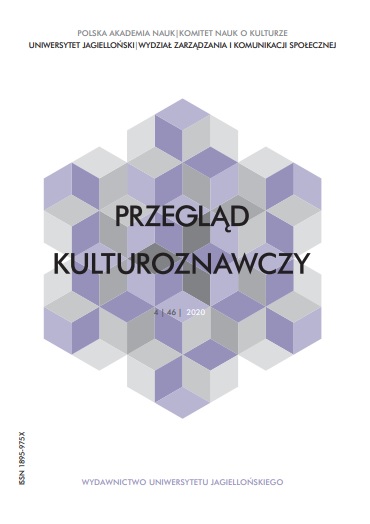Artywistyczne praktyki mapowania przeciw kryzysom. W stronę miejskiej potencjalności
Artivistic Mapping Practices Against Crises. Towards Urban Potential
Author(s): Joanna PankauSubject(s): Rural and urban sociology, Sociology of Culture
Published by: Wydawnictwo Uniwersytetu Jagiellońskiego
Keywords: artivistic practicies of mapping; critical cartography; crisis mapping; maptivism; urban assemblages
Summary/Abstract: The article focuses on the artistic-activist practicies of mapping urban crises, asking about their critical and transformational potential. Artivistic mapping – combining artistic practices with a form of political activism – is recognized in context of extracting inequalities in monitoring crisis areas, as well as the city’s transformational capabilities. Looking at the involvement of artists and activists in mapping projects is combined with the question of the potential for anti-crisis action – shaping political perceptions and stimulating alternative practical responses to generated urban problems. The following issues are addressed: (1) counter-mapping and the relationship of artistic practices with critical cartography, (2) the development of activist mapping forms – maptivism and crisis mapping, and (3) references to the interests of new urban ontologies, in particular the on-epistemological dimension of urban mapping assemblage, binding issues of updating and the potential of cities.Mapping is recognized in the critical-activating dimension as a form of cognition oriented on creative experimentation and interference in existing reality. Because of this, it is an interesting and prolific area for practical consideration of the form of ‘engagement policy’ through ‘research of potentiality’. It is worth considering in what sense the practices of artistic and activist crisis mapping can be a “turning point” – opening “a window to new ways of seeing and imagining” (K. Dovey, M. Ristic). It is primarily a field for asking questions about transformational mapping possibilities – perceiving the city as a place of “radical potentiality” (C. McFarlane). In order to illustrate the problem more clearly, the last part of the work analyzes the anti-gentrification activities in the San Francisco Bay Area, in particular the mapping practices undertaken by Anti-Eviction Mapping Project.
Journal: Przegląd Kulturoznawczy
- Issue Year: 46/2020
- Issue No: 4
- Page Range: 444-460
- Page Count: 17
- Language: Polish

